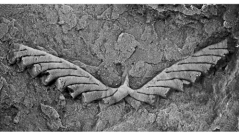

 Comptes Rendus Palevol
11 (5) - Pages 345-355
Comptes Rendus Palevol
11 (5) - Pages 345-355A multivariate analysis was used to determine the faunistic relationships of the northwestern Argentinean graptolite faunas of Floian age to faunas from Baltica, Avalonia, Laurentia and SW China. A statistical analysis at the species level of the five geographic regions for the Lower Floian was performed with the classic Jaccard's index. The resulting affinity dendrogram shows stronger relationships between Early Floian graptolite faunas of northwestern Argentina and those from Baltica, with less obvious similarities to Great Britain (Avalonia) faunas and only weak affinities to North American (Laurentia) and Chinese (SW China) graptolite faunas. The statistical analysis confirms the paleobiogeographic relationships previously observed in other areas of the Cordillera Oriental, and supports the hypothesis that during the Early Ordovician, northwestern Argentina was located at middle to high latitudes, corresponding to the Atlantic Faunal Realm of cold water graptolite biofacies. The studied graptolite material from the Quinilicán and Agua Chica sections is preserved in shales and siltstones interbedded with fine to medium-grained sandstones corresponding to the lower part of the Acoite Formation. The biostratigraphic implications of the associated graptolites are briefly discussed, and Trichograptus dilaceratus (Herrmann), Acrograptus gracilis (Törnquist), Expansograptus latus (T.S. Hall) and Corymbograptus v-fractus tullbergi (Monsen) are described from the Argentine Cordillera Oriental for the first time.
Graptolites, Floian paleobiogeography, Statistical analysis, Northwestern Argentina